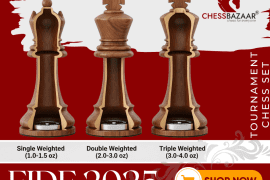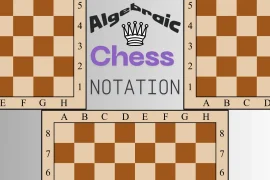Chess Pieces Names and Moves: The Complete Guide to Master Your Game
Chess is a timeless battle of wits, strategy, and artistry. Whether you’re a beginner just learning the ropes or a seasoned player seeking mastery, one foundational skill is knowing every chess piece and understanding how they move. At ChessBazaar.com, we’re passionate about bridging craftsmanship and chess expertise to enhance your playing experience.
In this detailed guide, I’ll walk you through each chess piece—their names, moves, strategic roles, and special powers—while weaving in personal anecdotes from the craft of making chess sets and competitive play observations. Ready to sharpen your skills? Let’s dive in.
The Chessboard Setup: A Stage for Strategy
Before we meet the pieces, picture a 64-square board, alternating light and dark hues, stretching before you. Each player commands 16 pieces arranged meticulously across the two rows nearest them. This precise setup isn’t arbitrary—it’s steeped in history and designed to balance offense and defense from the start.
Meet the Chess Pieces and Their Moves
Pawn — The Foot Soldier with a Secret
-
Movement: Moves forward one square, but on its first move, it can advance two.
-
Capturing: Captures diagonally, one square ahead.
-
Special: The only piece that promotes to any other piece upon reaching the opponent’s back rank (usually a queen).
Personal insight: Crafting pawns is an intricate process. Though small, their subtle curves and delicate contours often dictate the tone of the entire set. In tournaments, I’ve seen games won and lost on a single pawn’s brave journey across the board.
Knight — The Agile Horse Jumping in L-Shapes
-
Movement: Moves in an “L” shape: two squares in one direction and one perpendicular, capable of jumping over other pieces.
-
Capture: Captures on landing squares, just like its move pattern.
Strategic tip: Knights thrive in closed positions where pawns block straight lines—jump over obstacles and launch surprise attacks. In artisan terms, knights demand detailed carving, bringing personality to the set with every flowing mane carved by hand.
Bishop — The Diagonal Sharpshooter
-
Movement: Slides any number of squares diagonally.
-
Color-bound: Always remains on the color it starts on.
Role: Bishops complement knights by controlling diagonal lanes. Their long reach makes them deadly in open positions, influencing gameplay across the board.
Rook — The Castle on Wheels
-
Movement: Moves any number of squares along ranks (rows) and files (columns), but never diagonally.
-
Special: Vital in castling, moving with the king for king safety.
Crafting note: Rooks require precision packing of robust wood grain to convey strength and solidity—a fitting metaphor for their game role as powerful towers.
Queen — The Most Powerful Chesspiece
-
Movement: Moves any number of squares in any direction—vertical, horizontal, or diagonal.
-
Value: The game changer, blending rook and bishop powers.
Fun fact: Our handmade queen pieces balance elegance and dominance, often a focal point to our collection, symbolizing grace and strength in one.
King — The Heart and Soul of the Game
-
Movement: Moves one square in any direction.
-
Objective: Protecting your king is paramount; losing it means defeat.
Story: The king’s design might be the simplest yet requires careful detailing—every notch conveys authority and fragility, reflecting the precarious nature of the piece on the battlefield.
Special Chess Moves to Know
Pawn Promotion
Imagine the thrill: a humble pawn crossing enemy lines and transforming into a queen, rook, bishop, or knight. This dynamic turn shapes outcomes and strategies alike.
Castling
The only move involving two pieces, castling lets you shield your king by swapping it two squares towards a rook—propelling your rook into action.
En Passant
A subtle pawn capture allowing a pawn to capture an opponent’s pawn that has just moved two squares forward as if it had moved only one.
Chess Piece Values: Understanding the Stepping Stones of Strategy
| Piece | Point Value | Notes |
|---|---|---|
| Pawn | 1 | Small but indispensable; potential to be promoted. |
| Knight | 3 | Unique jumping ability; valuable in closed positions. |
| Bishop | 3 | Strong diagonally; pairs well with knights for board control |
| Rook | 5 | Powerful linear movement; key in endgames and castling. |
| Queen | 9 | Most versatile and dominant piece on the board. |
| King | ∞ | Priceless; checkmate ends the game. |
Tips from ChessBazaar’s Craftsmanship & Play
When designing our chess sets, I consider the weight and balance critical for intuitive play. Weighted bases help pieces glide smoothly, avoiding accidental spills—a subtle but crucial feature champion players appreciate. Our rosewood and ebony sets provide tactile cues as you play, refining muscle memory over countless matches.
Important :-
-
Explore our Luxury Wooden Chess Sets for premium craftsmanship.
-
Follow our Beginner’s Chess Guide to find the perfect first set.
-
Learn about Chess Piece Materials to select the best for your style.
Conclusion: Elevate Your Chess Game by Mastering Your Pieces
The journey to chess mastery begins with the pieces at your fingertips. Knowing their names, movements, and strategic values enriches your experience and deepens your connection to the game. At ChessBazaar, we marry centuries-old artisan tradition with modern gaming excellence to bring you pieces you’ll love to play with and proudly display.
Ready to invest in your passion? Explore our artisan-crafted chess sets and transform each game into an artful duel.
Shop now and command your board with confidence!
FAQs
Q1: How does pawn promotion work in practice?
When a pawn reaches the farthest row, it can be exchanged for any other piece, most commonly the queen, dramatically shifting game momentum.
Q2: Can the knight move diagonally?
No, knights move in an L-shape pattern and uniquely jump over other pieces.
Q3: What is castling, and when can I do it?
Castling involves moving the king two squares toward a rook, then moving the rook beside the king if neither piece has moved and the path is clear.
Q4: Why are chess pieces weighted?
Weighted pieces offer better stability and tactile feel, allowing more precise and confident moves.
Q5: What materials are best for chess pieces?
Premium woods like Indian Rosewood, Ebony, and Sheesham offer durability, beauty, and weight favored in tournament-quality sets.
This article is proudly crafted by Sumit Duhan, chess expert of ChessBazaar.com – where tradition and tournament-quality chess meet in harmony.
Disclaimer: This article aims to educate and empower chess lovers worldwide. Always consult official tournament guidelines for regulated play.


